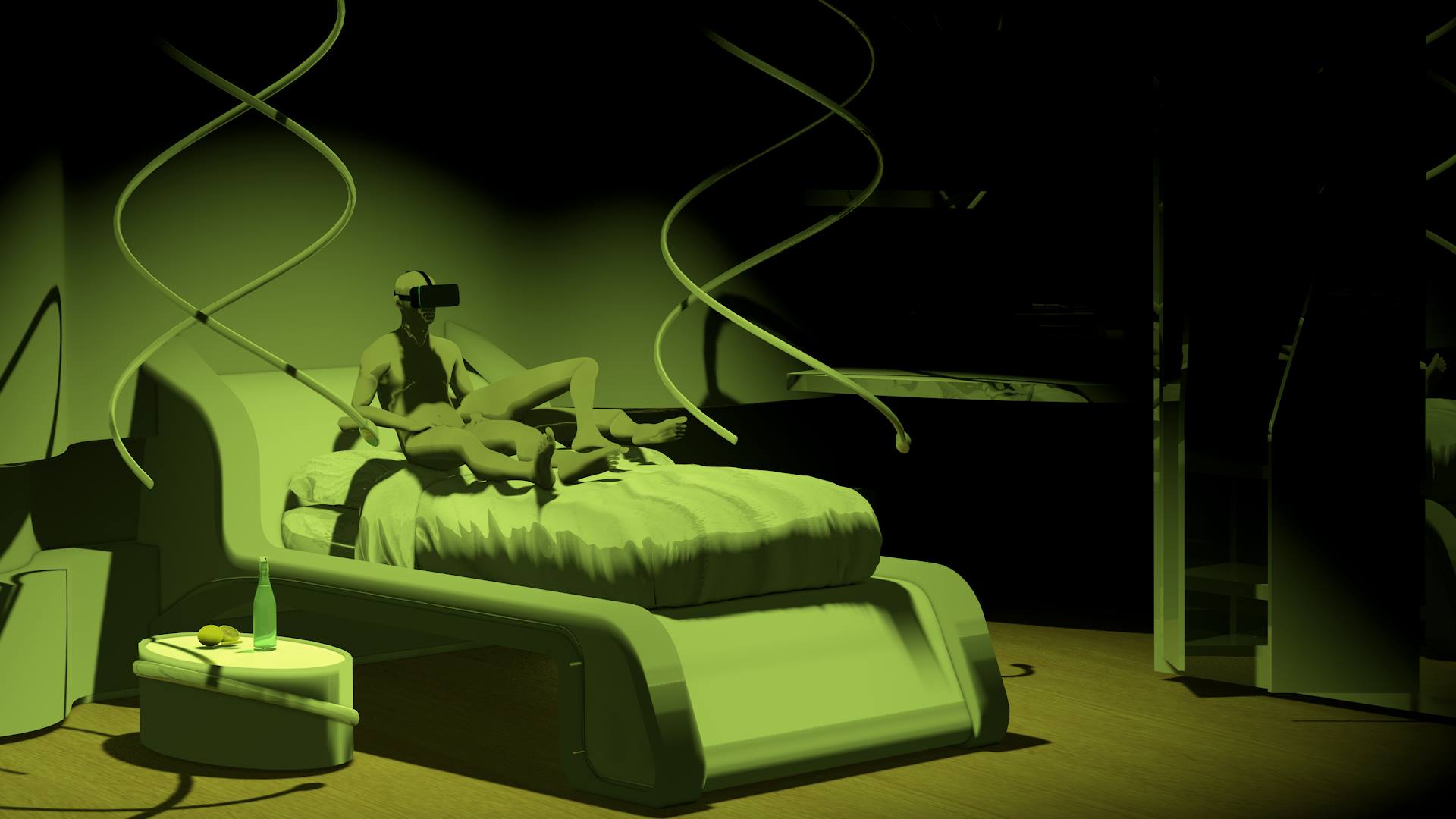V i t a m i n D++
Codifying a daily routine in a futuristic and technologically advanced world.
produced by: Chris Speed, Harry Morley, Adam He and Qi Ba
Abstract
Our project is an exploration into the codification of daily life through a utopian lens. The artefact is an audiovisual piece containing Solarpunk-style imagery, daily life sonification and a time-based Max/MSP patch. We aimed to emphasise the deterministic nature of life and make links to computation and programming styles.
After our initial fascination with Cyberpunk and Vaporwave, we decided take a different approach, drawing on the aesthetics of the relatively new literary genre, Solarpunk. It has lurked on the Internet for around a decade and aims to positively find solutions for the low-life aspects of other futuristic speculation, often found in sci-fi and Internet art forms. Solarpunk asks questions such as “What will renewable energy computing look like?” and “Is it possible to live in harmony with nature and technology combined?”. In the Medium reference guide to Solarpunk, it is described as being “utopian, just optimistic, or concerned with the struggles en route to a better world — but never dystopian.” (@thejaymo, 2018).
Our piece depicts a human in a futuristic urban environment, experiencing a society valued by the sun, (rather than the pixel). We aimed to snapshot the world by narrating with code, 3D renders and sound collage. To link life with computation, we looked at the concept of ‘postmodern programming’, particularly from the technical report of James Noble & Robert Biddle. Rather than viewing programs as perfect, uniform entities which will definitely be executed, a postmodern view is that software is a bricolage of code that can work in different ways, that may or may not be executed. We found that the lenses to view life can be zoomed in and out, revealing encapsulations of complexity: life is an entangled collection of subpatches within subpatches.
There is personal style in programming, an example being commenting and naming as part of the job, which might be where the personal touch of the human programmer is put into. Programming is a highly rational job that allows little emotion inside the code to be executed, but a programmer can always put his/her humour, irony or anger somewhere inside the impersonal machine. As the application is being programmed by different engineers along the way, these personal touches taint the software so it passes on with some attitude, which can affect the way other programmers work. This, we think, is another layer of programming - an invisible layer. Programming is a matter of style, and function. We explore this in our project and how it positions our lens when observing life as a system of programs.
Levels of programming language || levels of lifestyle:
High level - easy to program but relies on existing resources in a fixed, pre-configured setup || benefits from public welfare but conforms to social norms, living out a template.
Low level - make changes from bottom up, harder to manage || creates unique and fulfilling lifestyles but risk of being rejected, living closer to the metal.
Ultimately, we feel some strengths of the research artefact include it’s commentary on social structures and computation as well as creatively adding to the canon of this relatively new genre of internet fiction. However, it has been hard to reach many concrete conclusions on this abstract subject, so the threads are left tangled for now.
“The more questioningly we ponder the essence of technology, the more mysterious the essence of art becomes.” (Heidegger 1977, p19)
References/Influences
Anon. (2012) On the Need for New Futures. Available at: https://solarpunks.net/post/27525726746/on-the-need-for-new-futures (Last accessed: 15 Dec 2018).
Dunne and Raby. (2013) United Micro Kingdoms. Available at: http://www.dunneandraby.co.uk/content/projects/666/0 (Last accessed: 15 Dec 2018).
Heidegger, M. (1977) The Question Concerning Technology. Germany: Garland Publishing.
Henrot, C. (2013) Grosse Fatigue. Available at: https://www.camillehenrot.fr/en/work/68/grosse-fatigue (Last accessed: 15 Dec 2018).
Noble, J. and Biddle, R. (2002) Notes on Postmodern Programming. Available at: http://www.mcs.vuw.ac.nz/comp/Publications/archive/CS-TR-02/CS-TR-02-9.pdf (Last accessed: 15 Dec 2018).
@thejaymo. (2018) Solarpunk - A Reference Guide. Available at: https://medium.com/solarpunks/solarpunk-a-reference-guide-8bcf18871965 (Last accessed: 15 Dec 2018).



































































